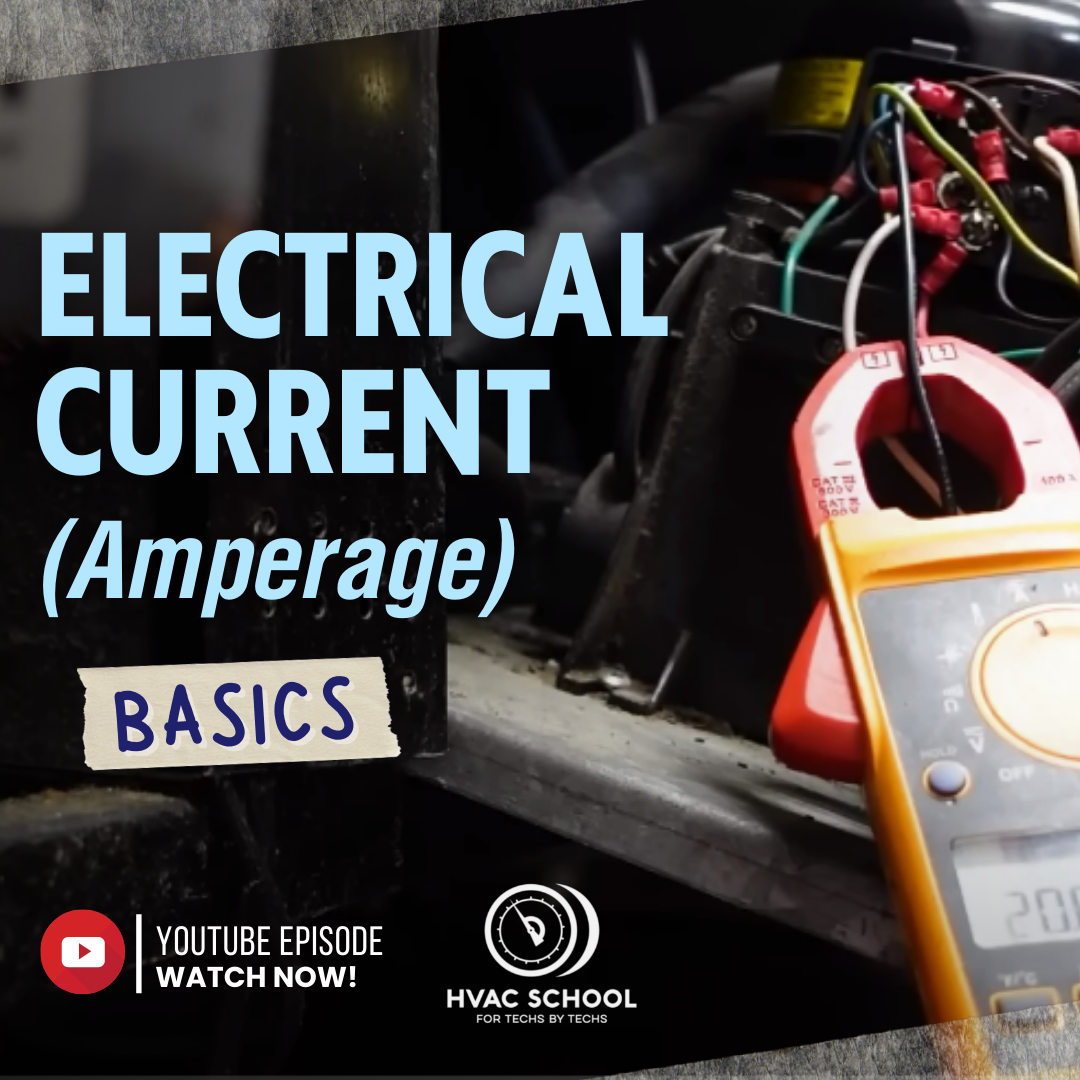Electrical Current (Amperage) Basics
October 6, 2022


Current, not to be confused with “power,” refers to the movement of electrons in an electrical circuit. Electrons don’t “flow” through a circuit like water through pipes, but they behave more like little forcefields, which is what does the work and is picked up by the amp clamp of a multimeter or ammeter.
Voltage, on the other hand, is like a source of electrical pressure. The more voltage behind a current, the stronger the field. There needs to be electron motion for there to be current; voltage doesn’t necessarily indicate the presence of current.
Voltage and current make up Ohm’s law, which states that voltage is equal to the multiplication of current and resistance. In other words, current increases as resistance decreases and vice versa.
If you’re verifying that a system is off, you’ll clearly want to measure voltage with the equipment off; however, you’ll want to measure voltage under load if you’re checking equipment operation.
If you’re working on a conductor and notice that the current is higher than it’s supposed to be with normal voltage, then the resistance is low. That could happen because the windings or conductors touch another surface and make an undesigned path. We call those situations “shorts.” To make this concept easier to understand, Bryan uses a traffic analogy; a highway with potholes will make it harder for cars to pass through, but an exit that allows traffic to bypass the slower path on a superhighway and move a lot more cars. That superhighway behaves like a short. High amperage should cause breakers to trip or fuses to blow.
In the case of a thermostat, the R terminal has a path in, Y has a path out, and there is a contactor coil. Then, that contactor coil connects back to C, common. When the contacts close, current may flow; your amp clamp should read roughly the same amperage at all points on the conductor. Contactors that don’t pull in properly could draw higher current than normal. Also, the amperage along the conductor should match the current inside the thermostat; the temperature could rise if another component of the low-voltage circuit is drawing higher current than normal. So, a failed thermostat could be caused by higher current elsewhere in the circuit,
To get a proper amperage measurement, you will want to make sure you center it inside the amp clamp. If the conductor is too close to the edge of the jaws, you could read a higher amperage than what’s really there.
Comments
To leave a comment, you need to log in.
Log In